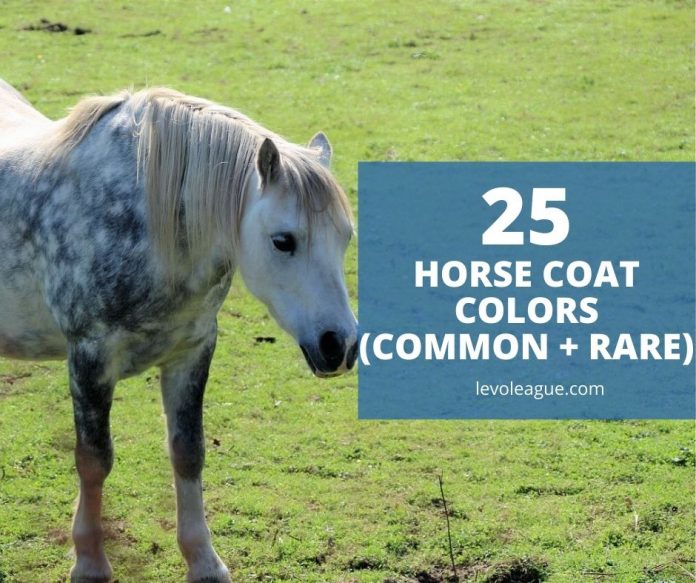Next to dogs, horses should be considered as another man’s best friend. They are gentle, loyal, dependable, and simply majestic with the many colors that they have. Of course, like humans and other animals, horse colors are dependent on genetics. Some are very classy to look at and some are so rare you could just consider them magical. But what are the different colors of horses and where did they come from?
In this post, we will look at horse colors. We will sift through the most common horse colors and the rarest horse colors out there. Perhaps, you can make your own horse ranking in terms of color, right? To do that, read on.
How many horse colors are there?
In horse biology and genetics, there are only four horse colors, technically speaking. These base colors are black, bay, brown, and chestnut. All else, including the rare ones, are due to cross-breeding. Some colors are more magnified while other colors are muted as recessive. In very rare circumstances, the absence of the four base colors may also happen as in the case of Classic Champagne and Perlino.
Horse color chart
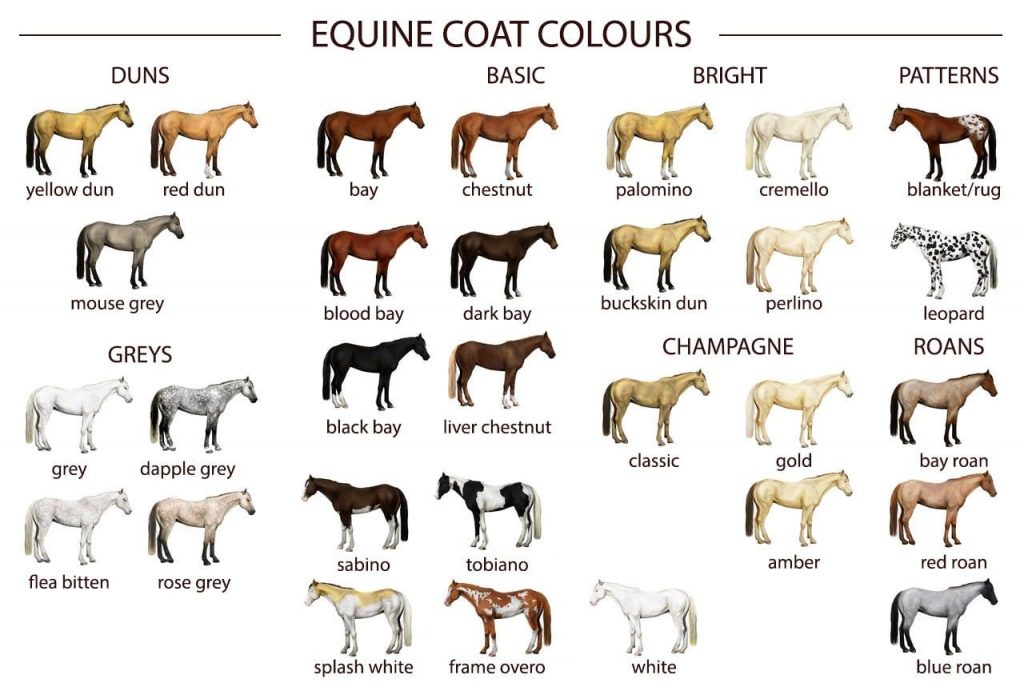
To have a head-start of the various colors horses have, here is a comprehensive presentation of the basic colors and some horse breeds where basic colors and combined colors could be seen.
Of course, these are not all that is there when it comes to horse colors since cross-breeding for show and racehorses have become more pervasive through the years. But since these are the most common ones, it could help in easy identification especially that various horse breeds might share colors and resembling patterns.
12 Most common horse colors
Out of the four basic horse colors, here are the most common horse colors that you will see. Note that just because they are common colors would not mean that horses are not cross-bred. That is a common misnomer and we are raising it here for clarification.
1. Bay
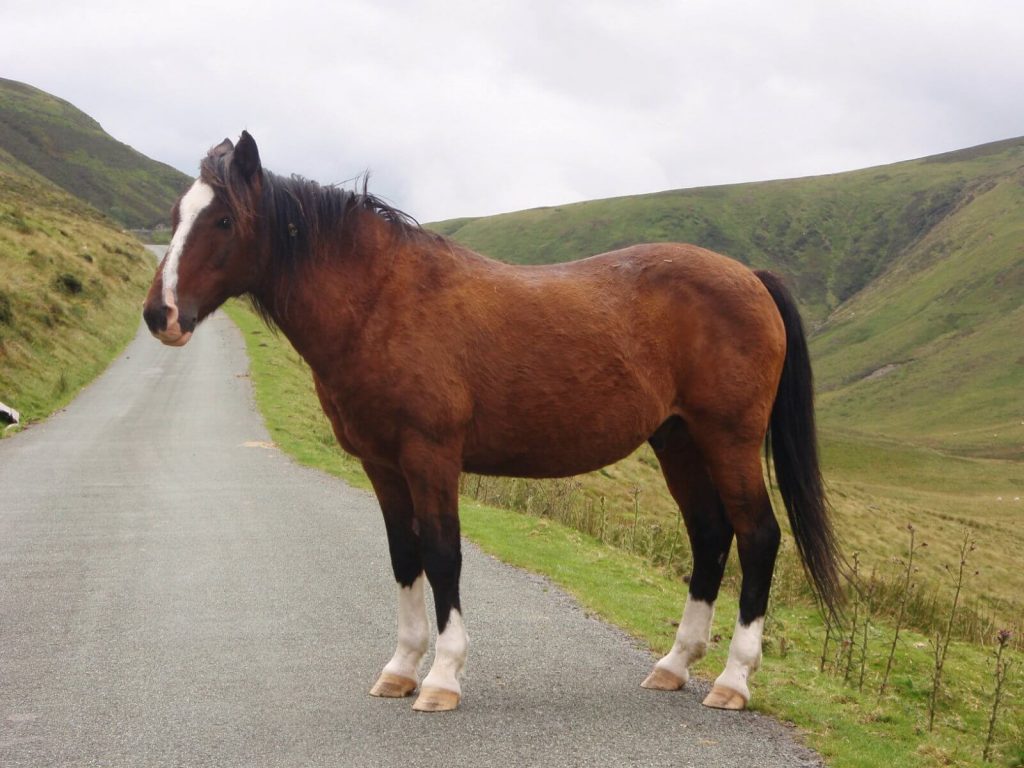
This horse color ranges from tan to reddish-brown. Bay-colored horses usually have bay or black-colored tails and manes although some breeds are sporting flaxen chestnut tails and manes. The most popular bay-colored horse breed would be Clydesdale.
2. Black

Black-colored horses are commanding, with a brutish flair and a very regal look. Some are pure black and some are dappled or painted. Black horses include the elegant Friesian horse, Merens horse, and Murgese.
3. Brown
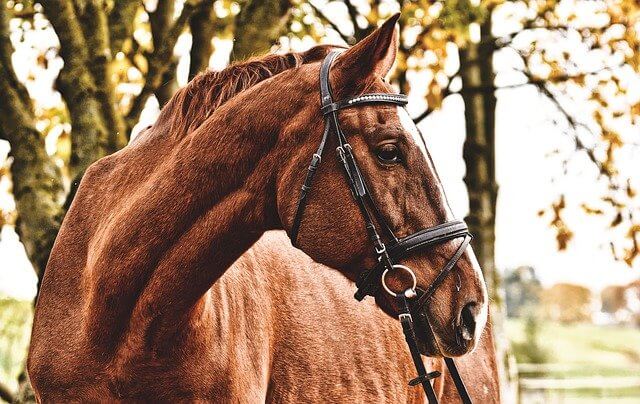
Some horse registries do not consider this a common color because of the bay and chestnut colors. However, most registries do. Brown-colored horses usually have a brown color or lighter shades of black for its base with caramel brown mane and tail.
They also have lighter brown patches in the ears, around the eye, in the muzzle, and even in the eyebrows. Brown horse breeds would be the Russian don, the Bashkir horse, and the Ukrainian riding horse.
4. Buckskin
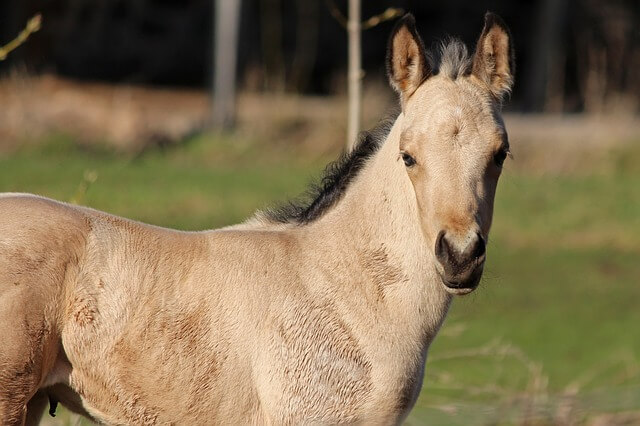
Buckskins come in gold, white or gray coats with black mane and tail and black points in the lower leg. Buckskins are a breed of their own. They are cross-breeds coming from dun and bay horses diluted with a cream-color gene. The most astonishing Buckskin would be the Silver Buckskin.
5. Chestnut
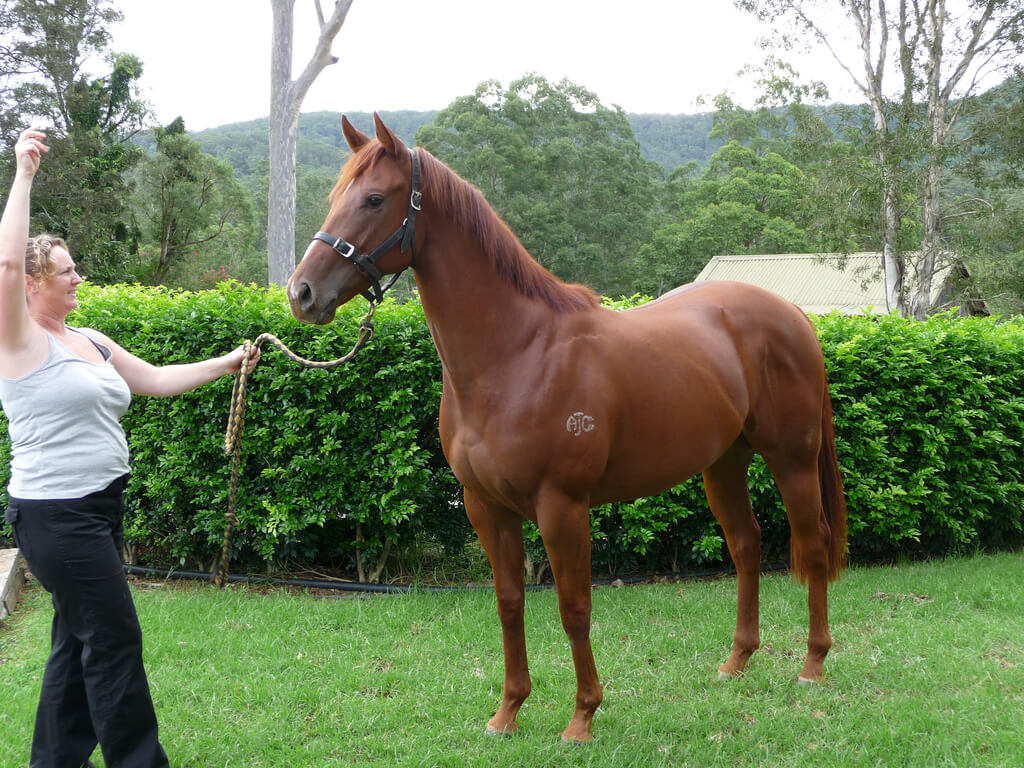
This horse color has a red base, hence, chestnut-colored horses would have brownish-red to dark red colors. Most of the time, the tails and manes are chestnut-colored too.
They do not have white or black markings and should there be some, they would come in liver chestnut colors or darker red. Exclusively chestnut-colored horses are Halflings and Suffolk punch.
6. Dun
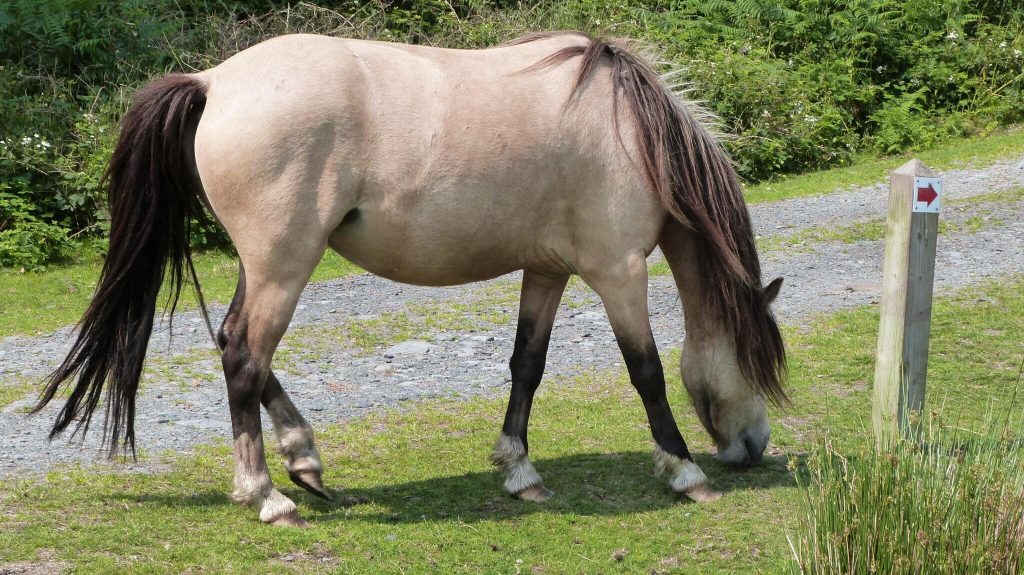
It is typically a breeding color. Dun horses have sandy gold or yellow coats and brown/black mane and tail. Dun horses are specifically distinct for their black or darker-colored legs that make them look like they have socks and their dorsal stripe. Dun is a breed and at the same time a color. One of the most common Duns would be the Red Dun.
7. Gray
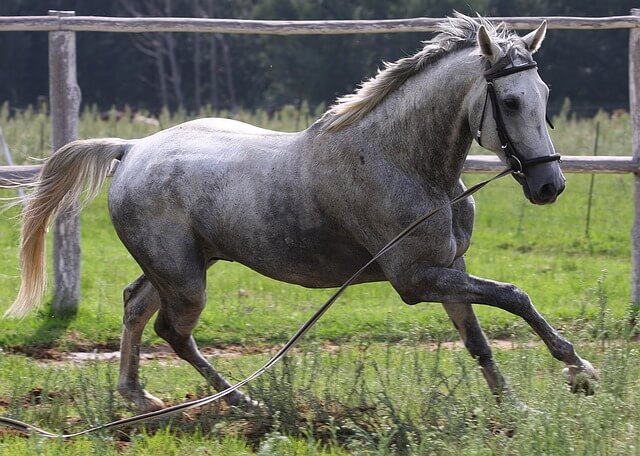
Gray horses are not automatically gray on birth. They usually come in another base color (usually bay, black, or chestnut). However, genetic dilution makes them lose their color pigment at birth as they grow older.
From that point, they will either become gray or white in color. Gray-colored horse breeds are Andalusian horse, the Spanish Norman, Yemeni horse, Lusitano, and Carthusian horse.
8. Grullo
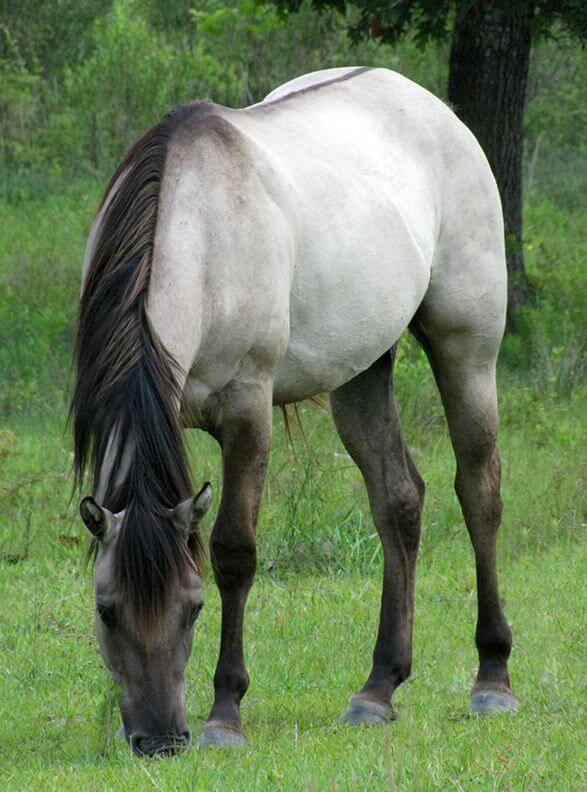
This one is a true winter beauty for horses. Grullo horses have a black skin base with a smoky gray-white flair and mouse-colored hairs all over. They have black points in the dorsal area and in the lower legs. They also have black manes and tails. Grullo horse breeds are Kazakh horse, Criollo, Sorraia, and Missouri Fox Trotter.
9. Palomino
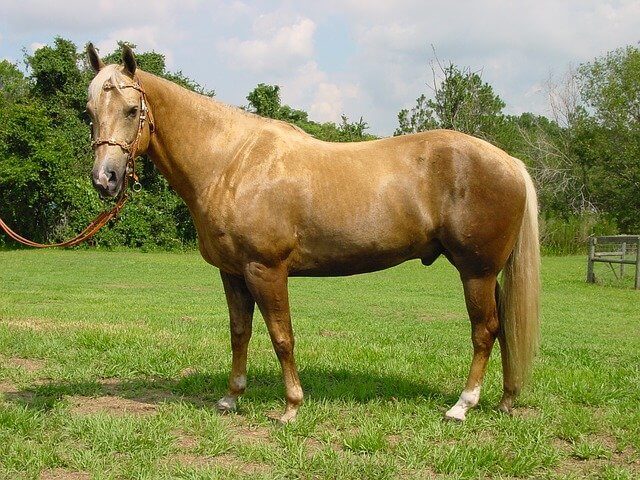
The palomino is truly a beautiful parade of horse base colors. Its body has a red base diluted with cream giving it a shiny, almost golden-brown color. Some palomino horses also have flaxen or off-white coats. Its mane and tail are white. Palominos are one of the most pricey and popular ride horses out there. Palomino horses would be Saddlebred, American Quarter Horse, and Morgan horse.
10. Pinto
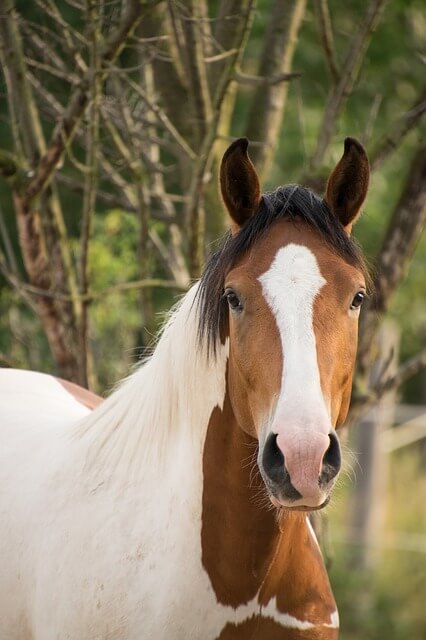
This is not to be mistaken with paint horses because a majority of horse registries consider them as one and the same. Common base colors for pinto would be chestnut or brown with distinct white patches all over the body.
The white markings are different across horse breeds. Paint breeds usually have the pinto color like the Pintabian, American paint horse, and Barock pinto but there are others too that carry this color like the Gypsy horse.
11. Roan
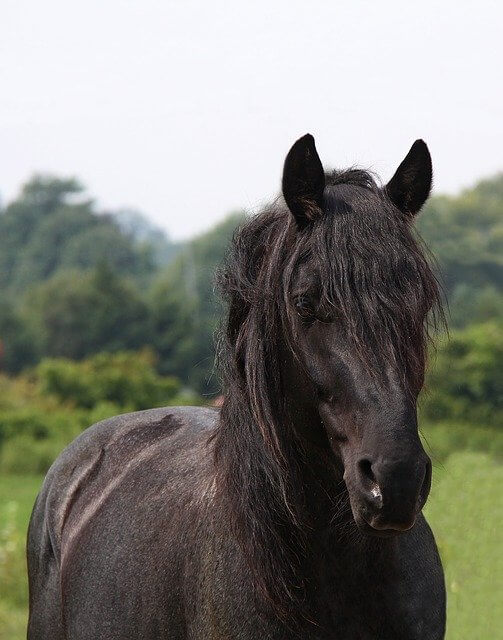
This is a common color but roan-colored horses look exquisitely rare. Their base color is black diluted in white or cream genes giving variants of red blue and bay roan. Identifying roan horses would be based on the color of their tiny hairs across the body. Roan-colored breeds would be Arabian horses, Paso Fino, and Peruvian Fino.
12. Sorrel
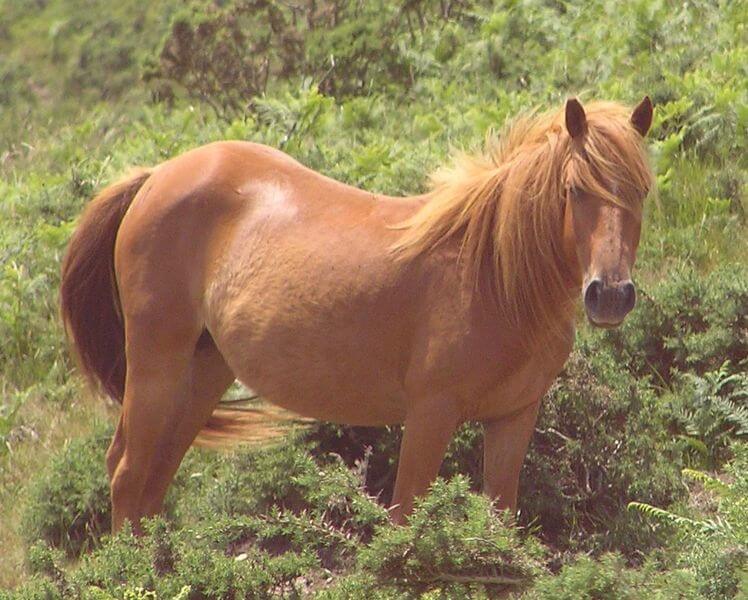
This one is often mistaken for chestnut but sorrel horses have a lighter brown color almost like softwood brown or caramel brown. The most distinct identifier of sorrel horses would be their blonde manes and tails. Sorrel horses would be the Belgian draft horse, Tennessee walking horse, Bavarian warmblood, and Sella Italiano, among others.
13 Rare and unique horse colors
If there are common horse colors, there are also rare ones making horse breeds who have them more pricey than others. For this part, we will be talking more about unique-colored horse breeds and will describe why they are considered as such.
1. Creamello
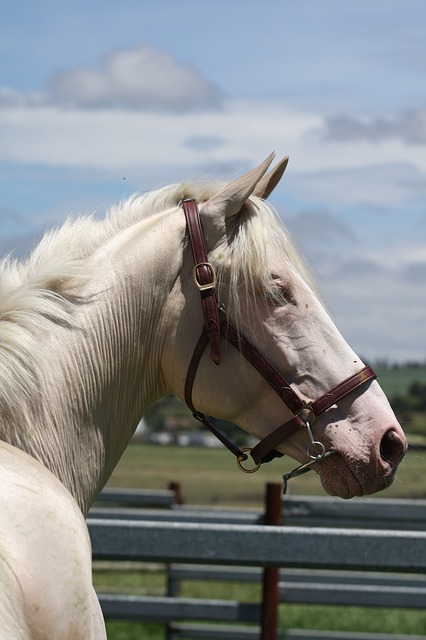
Often mistaken for the Perlino, cremello horses have cream, gold, or white base and a shiny, metallic-white sheen. The mane and tail are also gold or white. They are considered the most beautiful horses often called gold horses. The most pricey one is the national emblem of Turkmenistan named the Cream Akhal-Teke horse.
2. Perlino
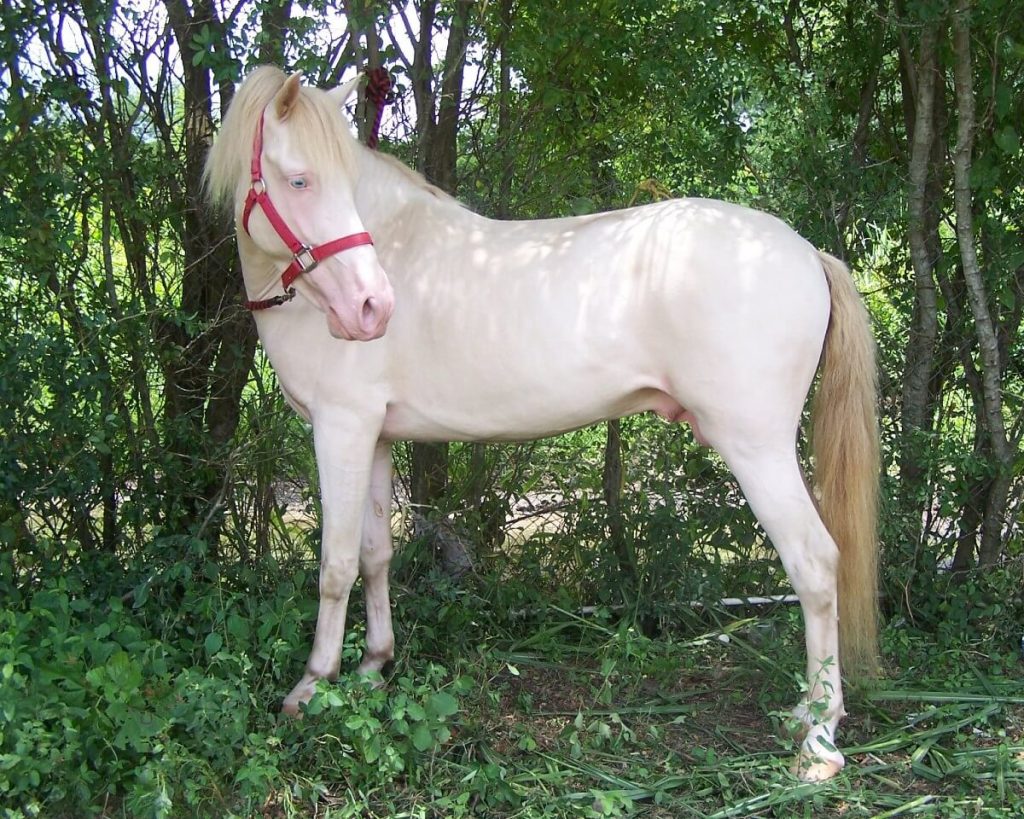
It is often confused for cremello because of their similar creamy color but perlino horses actually have a bay-colored base. They have pink eyes and pink skin and a cream-colored coat. Their mane and tail are also cream but with a darker (tinge of orange or copper) hue. Both cremello and perlino have blue eyes so it is really hard to distinguish them sometimes.
3. Chocolate flaxen
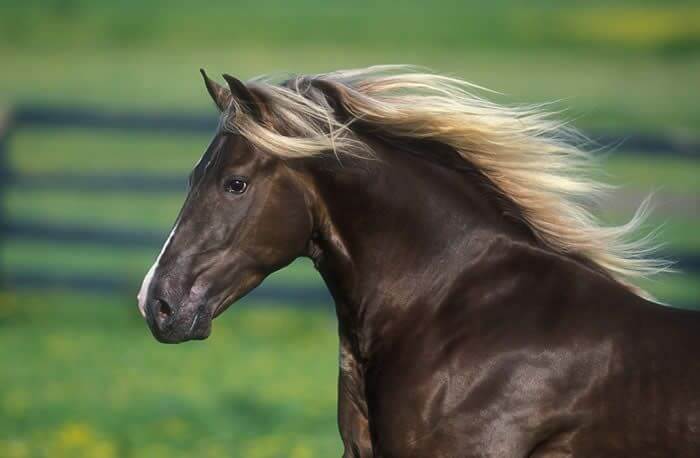
Horses with chocolate flaxen color have a chestnut base. The base is diluted with modified flaxen color giving it a strong chocolate brown color and ash brown-blonde mane and tail. Some horse breeds with this color would be Finnhorse, Swedish Warmblood, and miniature horses like the Shetland pony and the Welsh pony.
4. Black and white pinto
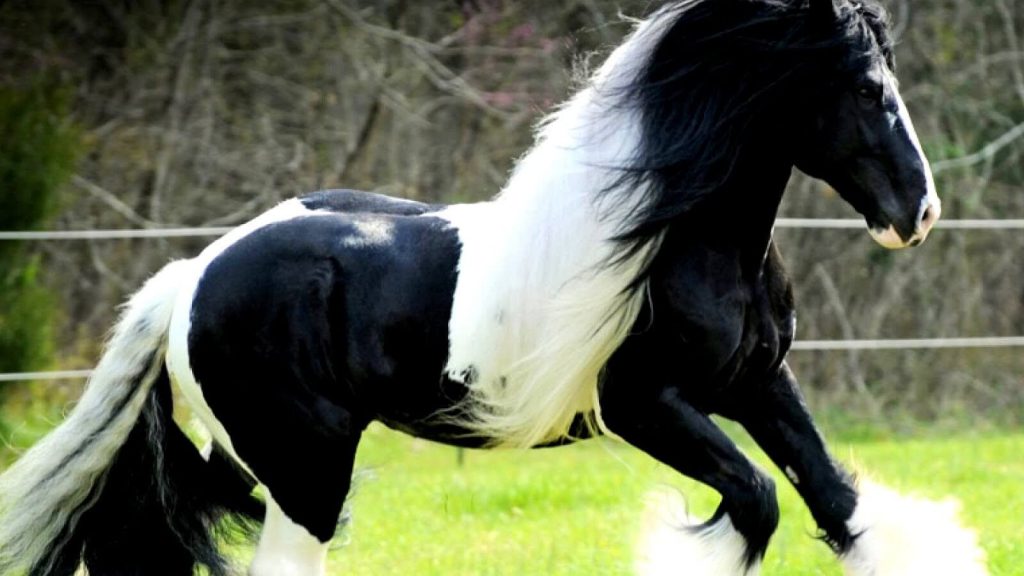
At first glance, black and white pinto horses may be mistaken for cows. They have the traditional black base of American horses but with patched white markings either largely on the body or as large spots in the ears or legs. The American paint horse is a classic black and white pinto breed.
5. Chimera
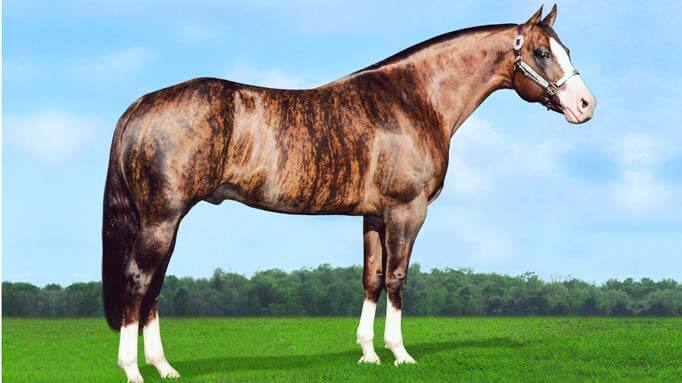
Chimera-coated horses literally look like they are in layers of fire. Their coats are bi-colored, often of chestnut and black. Their white points are located in the face and in the lower legs. Their mane and tail are chocolate brown to black.
Interestingly, this beautiful color is the offshoot of DNA error. The two colors are supposed to form one set of fraternal twin horses but due to failed mitosis, the gene was concentrated into just one.
6. Leopard
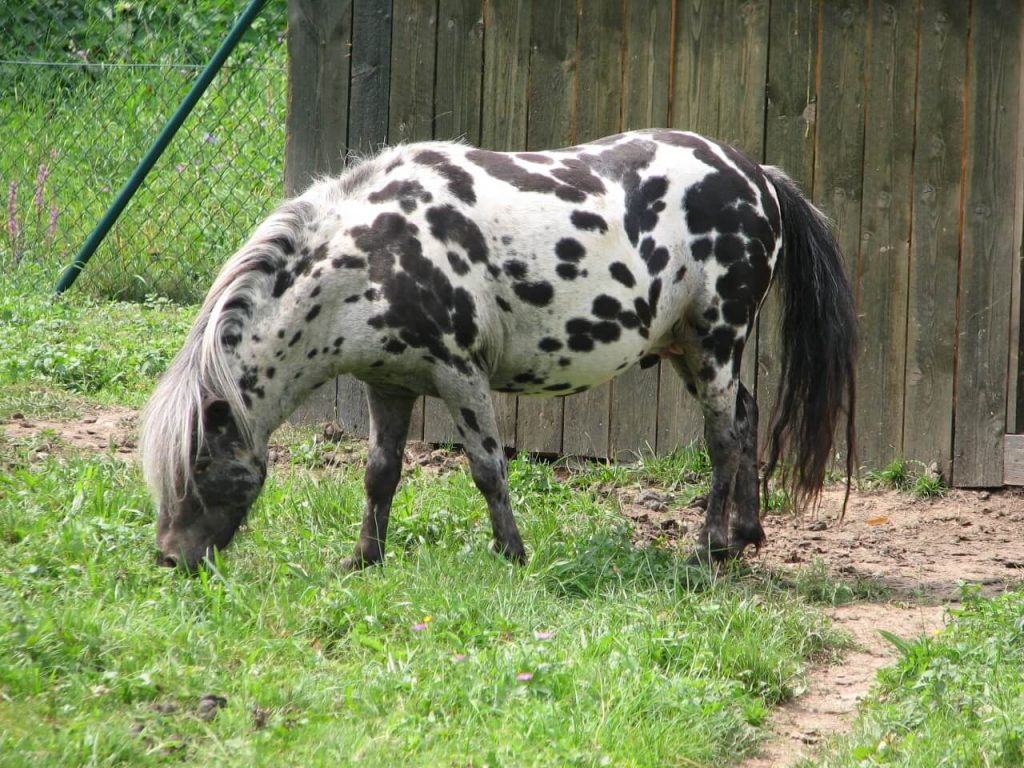
They look like large dalmatians or zebras depending on the breed with either white or black coat and spots. Some have manes with gray effect due to the combination of white and black hairs. Some have fine black or white mane and tails. Famous horse breeds are the Friesian-Appaloosa hybrid and the Knabstrupper.
7. Gold Champagne
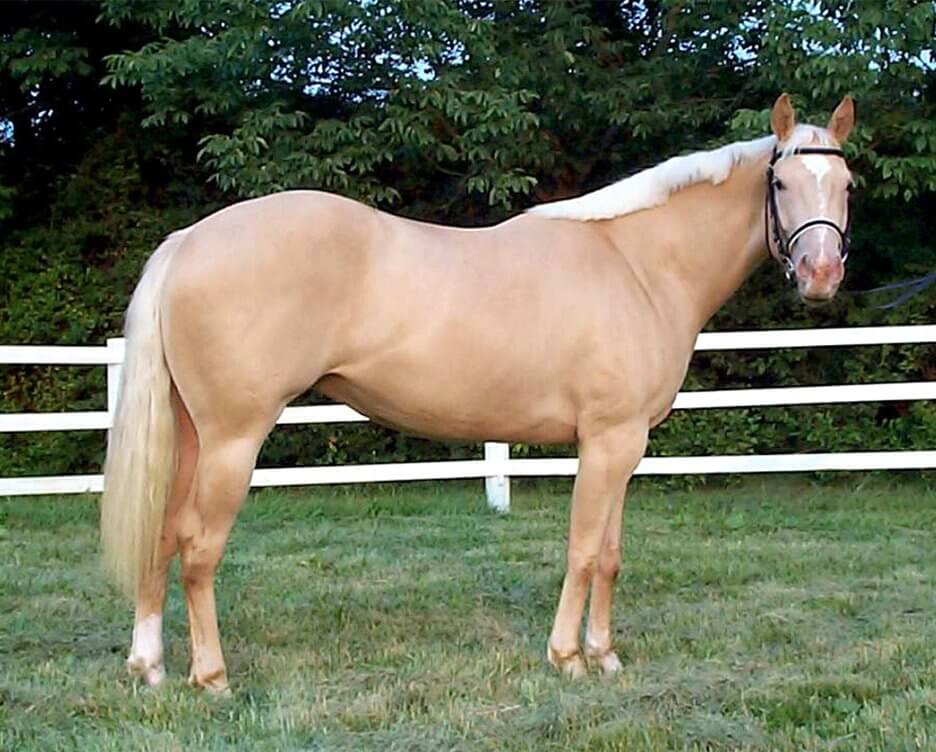
If you are watching the fairy tales as a child, you would know what gold champagne looks like. It is another albino horse (meaning all-white like the creamello and the perlino) distinct for its freckled skin, brown eyes, and golden body hairs. Inheriting the champagne gene is the key to this horse color.
8. Red rabicano
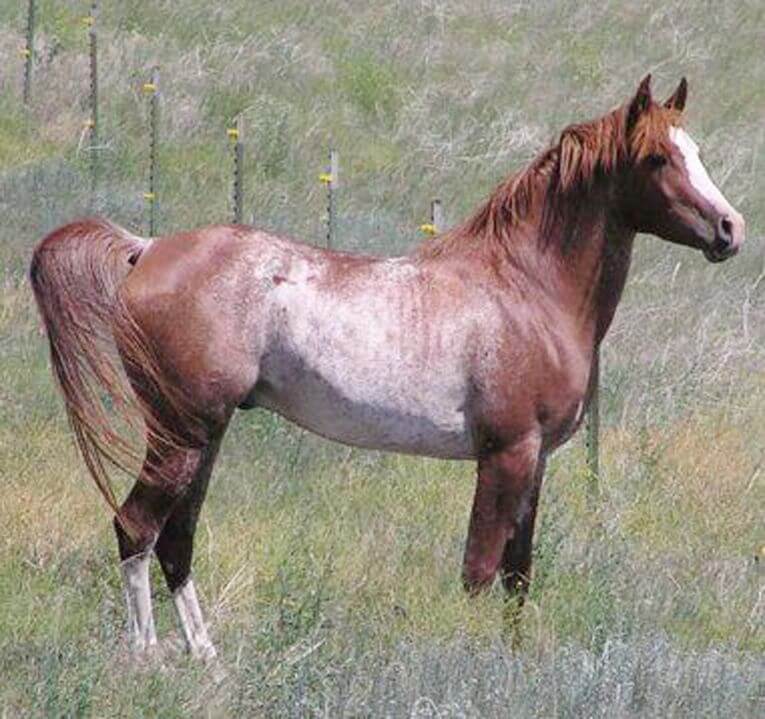
As the name implies, the base color of the rabicano is red or chestnut. The unique thing about it is that it is powdered with white markings following a specific pattern and can be found typically on the flank of the horse. The Red rabicano is a horse breed in itself.
9. Silver-brown/black
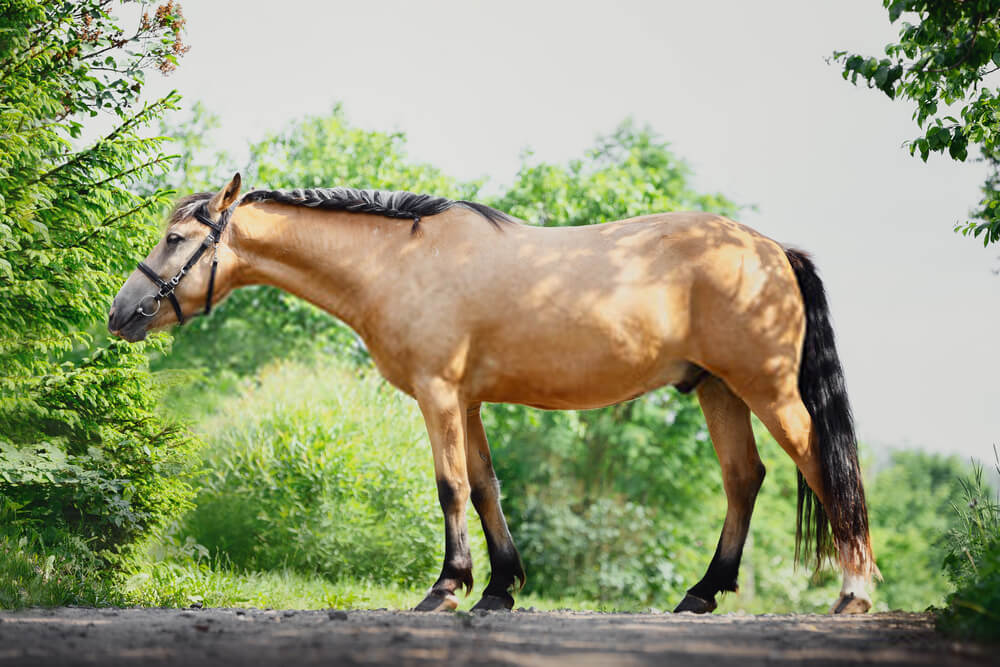
Buckskins are one of the few horse breeds with horses having silver-brown or black colors. These horses often have lustrous gray-black hair and a white base giving it its silver glow. They usually have black points in the muzzle, outlining the back and the lower leg.
Its mane and tail are often black or dark brown too. Overall, it is its sooty gray-black hair that gives it its shiny silver color. Silver-colored horses are very attractive winter horses.
10. Overo

The color is black and white but the pattern and markings make it rare. They look like bandit horses because their white points are below the eyes, continuing to the jaw. Other white points are in the lower leg and the neck. Its muzzle is black and its mane and tail are blonde. The Splash Overo is spectacular too with its all-white face, white legs, white tail, and chestnut body.
11. Silver dapple
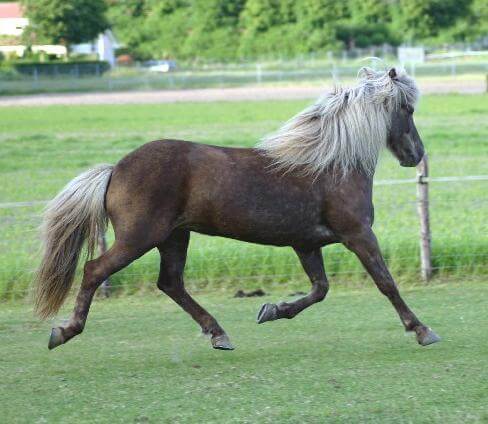
Silver-dappled horses are breathtaking because of their dark gray coat, shiny, silver manes, and white tail. They have other white points in the lower legs and in the back. The silver dapple color is found among Scandinavian horse breeds and the Rocky Mountain horse.
12. Dappled gray
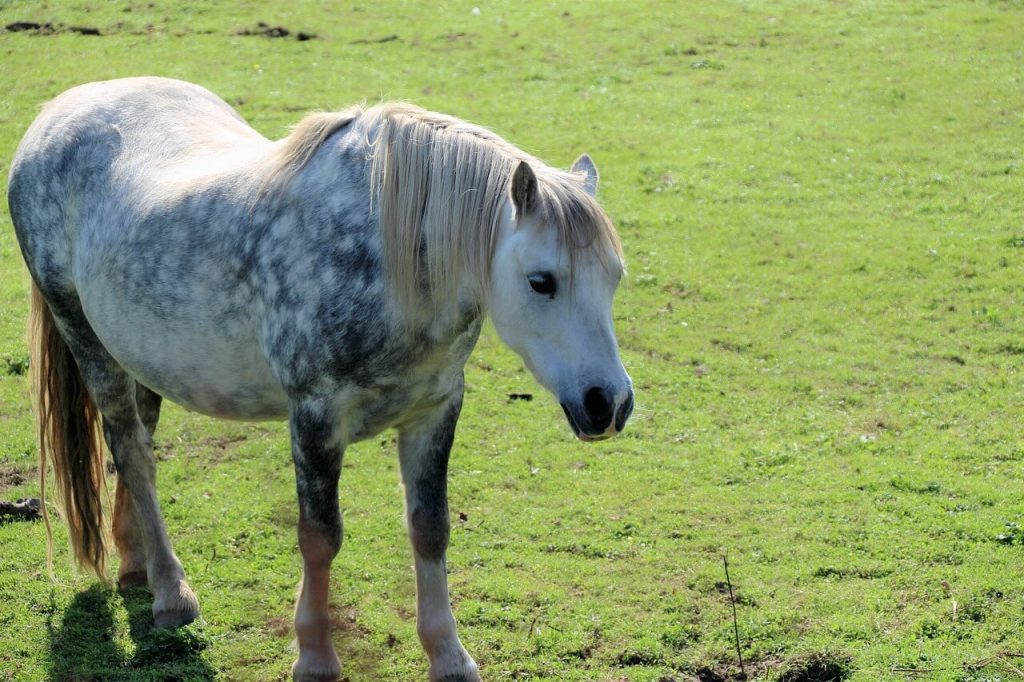
It is considered a unique color because this color hue is only achieved through numerous yet selected cross-breeding. Horses of this color are birthed with natural gray-white skin. Horse breeds of this color are Percheron, Orlov horse, Lippizan horse, and Poitevin horse, among others.
13. Brindle

It is also called as tiger gray mostly seen in dogs and cows. As a matter of fact, the brindle color is considered as the rarest color for horses.
The base is black, covered in a fading white coat and fine black hairs giving it a black-white-gray, vertical marking. This gene is not always inherited, though. This makes the brindle a rare color for horses.
Conclusion

Horse colors yet again reveal why horse breeds are very interesting points of study. While there are only four basic horse colors across breeds (bay, black, brown, and chestnut), the power of genetics and cross-breeding allowed us to have a myriad of horse colors (including color combinations we would not believe they could have).
It is quite interesting to note, however, that through intensive cross-breeding, some horses have become albinos. But this did not lessen their beauty because in the ‘absence of color’, they have become standout breeds. With all things considered, it is safe to say that there are still a lot of things we do not know about horses. As such, we will always continue to be awed by them.

